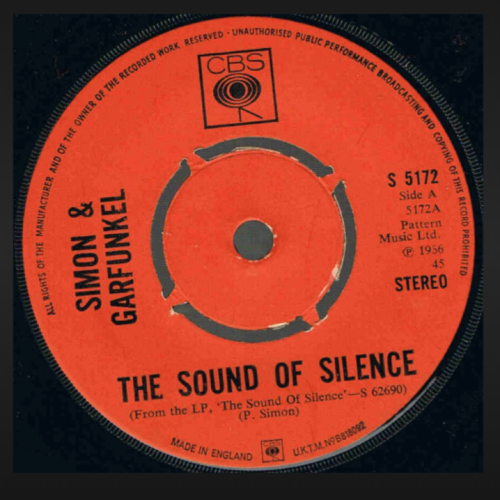Allowing for and using silence is the ultimate evidence of quiet confidence as a leader. Words always matter. But being silent reveals a different kind of strength. Use all the tools you have. Create a space others can fill with themselves. Listen up!
The louder and more frantic the world gets the more being silent is powerful (and needed) for you to use as a leader. Creating or merely allowing moments of silence is something you can do with intention.
If you know anyone in your life who is comfortable with and uses silence well, you see how profound the impact. You find yourself revealing things you never expected.
So, listen up…
What Happens When It Is Quiet
Silence is the absence of talking or noise. Wow, it is hard to find today. When it finally arrives, invariably these things happen:
- People pause and begin to reflect (hopefully on the latter)
- The void fills with a sense of discomfort, calm or something in between
- It amplifies what follows
People struggle, even become desperate to fill a silence. At the same time, it creates space you can use for good.

In her TED Talk called The Sound Of Silence Dr. Gage Paine asserts:
We need to cultivate silence to understand ourselves and each other.
She offers three questions (& strategies for each:)
- When do you have silence in your life?
- When have you experienced good listening?
- When have you experienced silence in a community (a group)?
How You Can Use Silence – With Dramatic Impact
There are high impact, even dramatic ways for you to use silence:
1) In front of a group. The sound of silence is never louder than when created in front of a group. The larger the group, the louder it sounds. (The most recent March For Our Lives event included a recent and dramatic profile example.)
In a leadership context, we talk about how communication is so vital for your teams to be informed and aligned. Let’s say you need to make a bold statement by recognizing someone’s contributions or ask for help with a severe performance problem. Weaving space and moments of silence are an incredible way of focusing a group.
Using silence creates anticipation. The audience will hold their breath. Even a few seconds of silence offers a pattern interruption from the regular drumbeat of a presentation or town hall-like meeting. And the intended message is far more likely to stick with them than a long speech.
2) In a team meeting. With rare exception, meetings where you do most or all of the talking fall short of their mission. Instead what if you take a performance issue or problem that needs solving, frame it for your team and throw it on the table for them to solve. Your job, be quiet and let them do it.
Think about how the dynamic of the meeting changes. More important, significant accountability emerges when they fully vest in the problem-solving.
Leading from the rear makes perfect sense here. Create space for your people and resist the temptation to interrupt or impose your will.
Less Dramatic Ways Being Silent Can Be Powerful
It doesn’t have to be a dramatic use of silence to yield impact.
1) Make space for it. Regardless the setting, group or 1:1 meetings, something is compelling if you allow for gaps in the conversation. It takes discipline, patience and a bit of nerve not to fill the space. While not always visible what, something will fill it. It’s often something that wouldn’t have surface had the regular drumbeat kept going.
Psychology Today’s article, The Effective Use Of Silence, says it well:
Silence gets you out of the way and creates a space others will fill in with themselves.
2) When you know the answer but don’t give it. This is what good coaches do. Sentences that start with, “what I would do” can make you feel better in the moment. Rarely do they make a lasting impact. Preferably a few well-crafted questions and then being silent, help them pace through an issue and enable their decision-making process. More importantly, they leave with an approach and more confidence on how to solve in the future.

3) De-escalate by not jumping in. It is hard to resist problem-solving or at least trying when your people come to you with problems. There are times when listening w/o interjecting is not only appropriate it is healing. Know when to let people’s thoughts hang out there so they can twist and turn through a problem.
Several years ago I was talking with one of our top salespeople who was struggling with a deal gone south. The root of the problem was a business decision made by another operating company. He had a sale pulled out from under him. His frustration was warranted, but there wasn’t a way to change it.
We talked — meaning we were in the same room for a few hours together and he vented. He needed to go round and round. At one point he stopped and said, “I’m done….that was exhausting.” I couldn’t change the outcome for him. But his thinking out loud got him to work through frustration and back up on his feet.
Related: Why The Best Leaders Empty Their Cup First
When Silence Is Punishing
There are times when silence can be punishing. The proverbial cold shoulder for example.
In a business context this is intentionally not getting back to one of your people – email, call, etc. – as a form of keeping them where you want them, under your control. I suppose someone could articulate a situation where it makes sense. In general, though it’s skirting around the issue.
I’m not sure people learn any quality lessons from the cold shoulder other than your pissed off. If that’s the case, tell them. Otherwise, you model undesirable behavior that comes back around.
Let Silence Amplify
The idea of being silent is not to manipulate. Instead, it is to help spur on reflection and increase anticipation for words surrounding the silence. Being silent amplifies what comes next. That amplification helps to improve the persuasion of what you communicate,
Allowing for and using silence is the ultimate evidence of quiet confidence as a leader. Words always matter. But being silent reveals strength as well.
Use all the tools you have and create a space others can fill with themselves.
Question: How does “being silent” factor into your leadership communication efforts?
If you would like a printable PDF of this post, click here.


